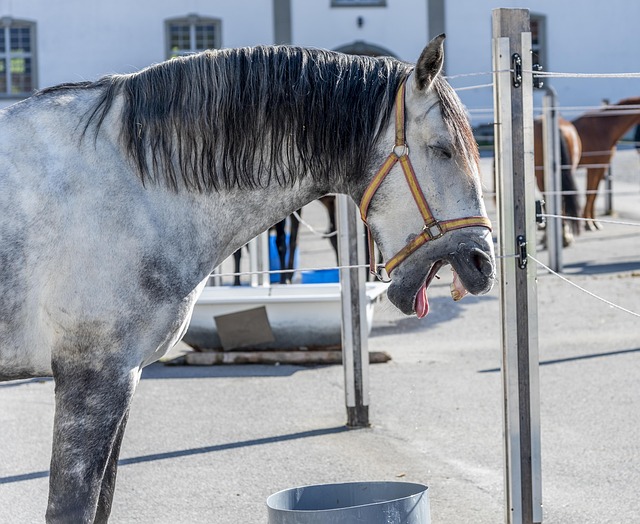High humidity in New Braunfels homes fosters aggressive mold growth, necessitating a dual-strategy remediation approach. This includes both eliminating visible mold through cleaning, decontamination, and antimicrobial treatments, and addressing moisture sources like leaks, poor ventilation, or inadequate insulation to prevent recurrences. Emerging eco-friendly methods such as UV light photodegradation and biocide-impregnated materials offer alternative solutions alongside traditional disinfectants. Regular maintenance, including dehumidification, proper drainage, and porous material replacement, is crucial for long-term mold prevention in humid New Braunfels environments.
In New Braunfels homes, high humidity often leads to mold growth issues, posing health risks and property damage. Understanding mold remediation is crucial for addressing these challenges effectively. This article delves into the intricacies of mold remediation in high humidity environments, exploring common antimicrobial treatments and providing effective strategies to prevent recurrence. By implementing these solutions, homeowners can ensure a healthier living space and avoid costly repairs.
- Understanding Mold Remediation in High Humidity Environments
- Common Antimicrobial Treatments for Mold Growth Issues
- Effective Strategies to Prevent Recurrence After Treatment
Understanding Mold Remediation in High Humidity Environments

In high humidity environments, like those commonly found in New Braunfels homes, mold growth issues tend to arise more frequently and persistently. This is because mold thrives in damp conditions, where it can quickly reproduce and spread. High humidity levels create an ideal environment for mold spores to germinate and establish root-like structures that attach to surfaces, leading to unsightly and potentially harmful growth.
Effective mold remediation in these environments requires a comprehensive approach that addresses both the visible mold and its underlying causes. This often involves implementing antimicrobial treatments alongside traditional remediation techniques like cleaning, decontaminating, and drying affected areas. By combining these methods, professionals can mitigate the risk of further mold development, ensuring a healthier and more comfortable living space for New Braunfels residents.
Common Antimicrobial Treatments for Mold Growth Issues

When dealing with high humidity and mold growth issues in New Braunfels homes, antimicrobial treatments are often necessary to effectively mitigate and prevent future problems. Common approaches include using disinfectants like chlorine bleach or quaternary ammonium compounds (QACs), which target and eliminate a wide range of microorganisms, including mold spores. These chemicals can be applied through various methods such as spraying, fogging, or cleaning solutions, depending on the severity of the contamination.
In addition to traditional disinfectants, innovative antimicrobial treatments like photodegradation and biocide-impregnated materials are gaining popularity. Photodegradation utilizes ultraviolet (UV) light to break down mold and bacteria, making it a cleaner and more eco-friendly option. Biocide-impregnated materials, such as antimicrobial-treated insulation or paint, continuously release chemicals that inhibit microbial growth, providing prolonged protection against high humidity and mold in New Braunfels homes.
Effective Strategies to Prevent Recurrence After Treatment

After successful antimicrobial treatment for mold remediation, preventing recurrence is paramount to maintaining a healthy living environment in New Braunfel homes plagued by high humidity and mold growth issues. Key strategies include addressing the underlying moisture problems that fueled mold development in the first place. This involves implementing measures like improving ventilation, fixing leaks promptly, and ensuring proper insulation to reduce condensation. Regular monitoring of humidity levels inside the home is crucial; using dehumidifiers or air conditioning units can help maintain optimal, non-conducive conditions for mold growth.
Additionally, regular cleaning and maintenance routines are essential. This includes regularly wiping down surfaces, especially in areas prone to moisture accumulation, with non-toxic, antimicrobial solutions. Upgrading or replacing porous materials that absorbed moisture during the initial growth phase is another effective step. Finally, keeping gutters clean and ensuring proper drainage around the exterior of the home can prevent water from pooling nearby, further reducing indoor humidity levels and mitigating the risk of mold recurrence.
In addressing high humidity and mold growth issues in New Braunfels homes, a multi-faceted approach is key. By understanding the unique challenges of these environments, utilizing effective antimicrobial treatments, and implementing preventive strategies, homeowners can ensure a healthier living space. Regular maintenance and prompt action are crucial to mitigating the risks associated with mold, creating a safer and more comfortable home for all.
